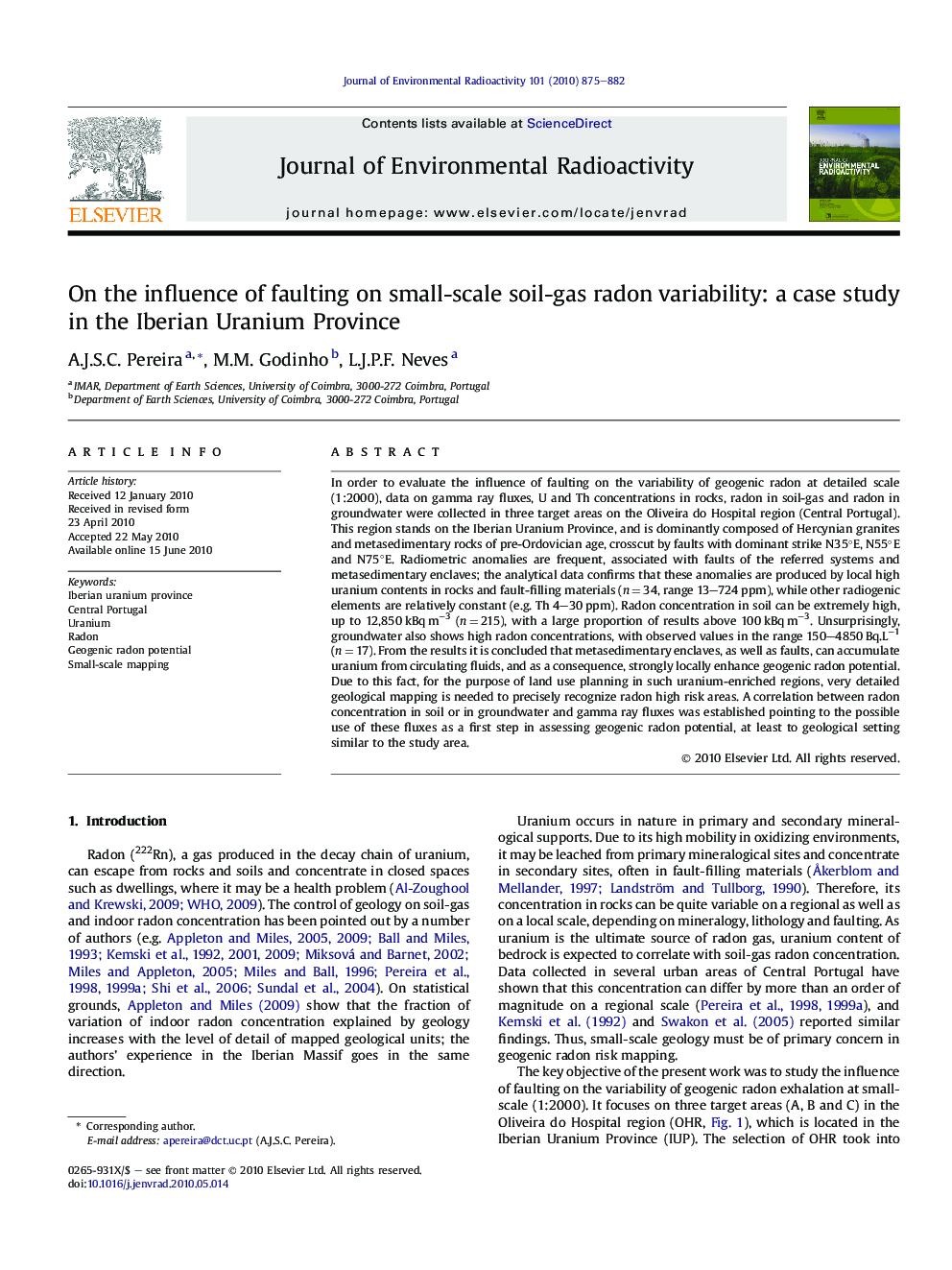| Article ID | Journal | Published Year | Pages | File Type |
|---|---|---|---|---|
| 1738676 | Journal of Environmental Radioactivity | 2010 | 8 Pages |
Abstract
In order to evaluate the influence of faulting on the variability of geogenic radon at detailed scale (1:2000), data on gamma ray fluxes, U and Th concentrations in rocks, radon in soil-gas and radon in groundwater were collected in three target areas on the Oliveira do Hospital region (Central Portugal). This region stands on the Iberian Uranium Province, and is dominantly composed of Hercynian granites and metasedimentary rocks of pre-Ordovician age, crosscut by faults with dominant strike N35°E, N55°E and N75°E. Radiometric anomalies are frequent, associated with faults of the referred systems and metasedimentary enclaves; the analytical data confirms that these anomalies are produced by local high uranium contents in rocks and fault-filling materials (n = 34, range 13-724 ppm), while other radiogenic elements are relatively constant (e.g. Th 4-30 ppm). Radon concentration in soil can be extremely high, up to 12,850 kBq mâ3 (n = 215), with a large proportion of results above 100 kBq mâ3. Unsurprisingly, groundwater also shows high radon concentrations, with observed values in the range 150-4850 Bq.Lâ1 (n = 17). From the results it is concluded that metasedimentary enclaves, as well as faults, can accumulate uranium from circulating fluids, and as a consequence, strongly locally enhance geogenic radon potential. Due to this fact, for the purpose of land use planning in such uranium-enriched regions, very detailed geological mapping is needed to precisely recognize radon high risk areas. A correlation between radon concentration in soil or in groundwater and gamma ray fluxes was established pointing to the possible use of these fluxes as a first step in assessing geogenic radon potential, at least to geological setting similar to the study area.
Keywords
Related Topics
Physical Sciences and Engineering
Energy
Nuclear Energy and Engineering
Authors
A.J.S.C. Pereira, M.M. Godinho, L.J.P.F. Neves,
